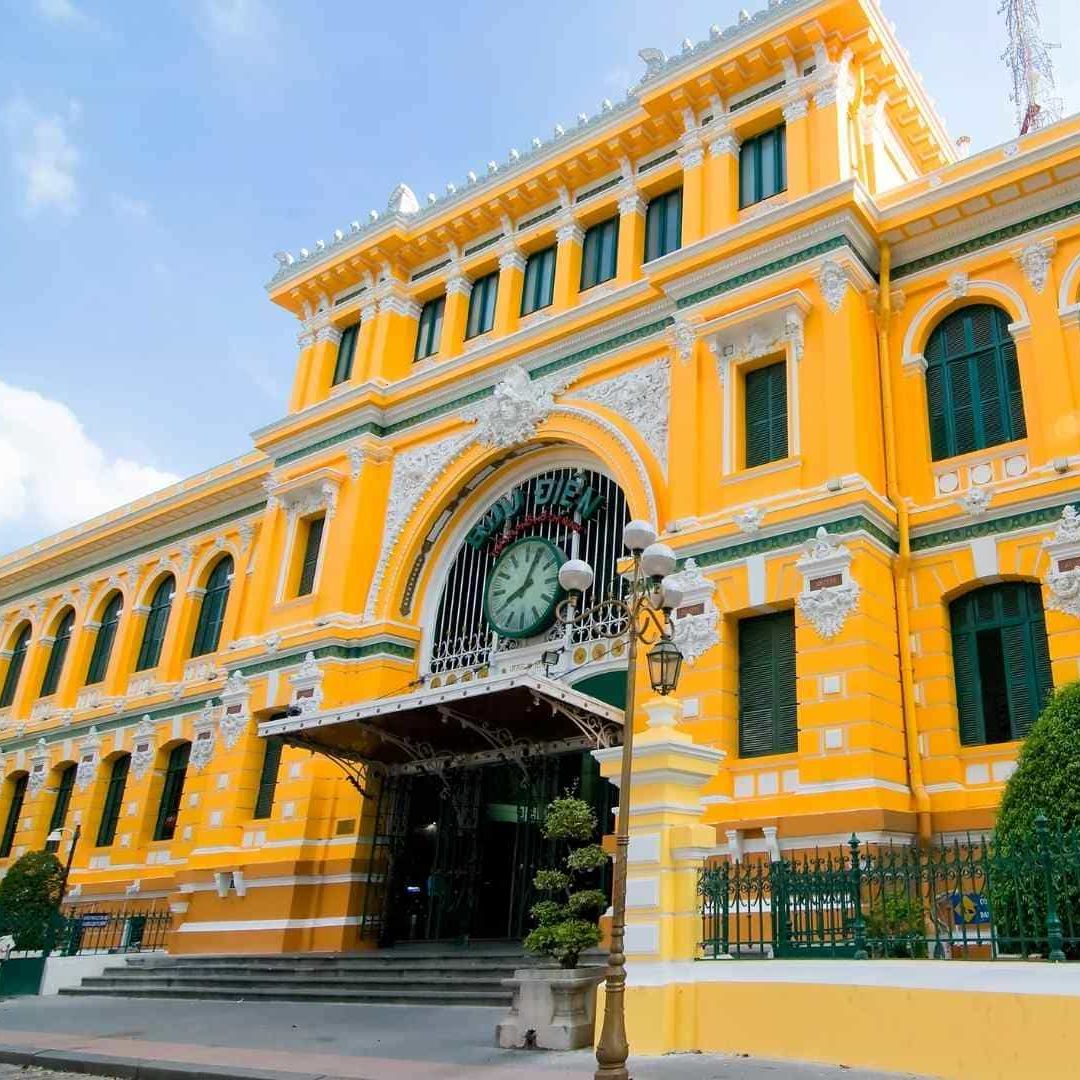Ho Chi Minh
Commonly known as Saigon, it is located west of the mouth of the Saigon River and north of the Mekong River Delta. It was Cambodia's main port before being annexed by the Vietnamese during the 17th century. Under the name of Saigon it was the capital of the French colony of Cochinchina. In 1975 it was united with the surrounding province of Gia Dinh and given its current name in memory of the communist leader. It has a population of 14,000,000 people, making it the largest and most populated city in the country, and one of the largest in Southeast Asia. It is an attractive and dynamic city, with elegant boulevards and historic French colonial buildings with an oriental touch. It is a city with a lot of energy, innovation, traffic and the economic heart of the country.
These are its most representative tourist places:
- Reunification Palace :Formerly known as Independence Palace, it was built on the former location of the former Norodom Palace, it is a historic building in the city, designed by architect Ngo Viet Thụ as the home and workplace of the president of South Vietnam during the Vietnam War and was the official site of the handover of power during the Fall of Saigon on April 30, 1975, when a North Vietnamese tank blew down its main gate, ending the war. The building covered an area of 12 hectares, including a façade 80 meters wide and a guest room with the capacity to accommodate 800 people.
- Notre Dame Cathedral: It is a Catholic cathedral and minor basilica located in the center of the city. It was built by French settlers in 1863, it has two bell towers with a height of 58 meters that contain 6 bronze bells, a façade of red brick imported from Marseille and stained glass. It is the cathedral of the archdiocese of Ho Chi Minh. In front of the cathedral is the Carrara marble statue of Our Lady of Peace, which was the subject of a curious phenomenon in October 2005, during which a tear ran down one of her cheeks. Several people gathered nearby because they believed it was a miracle.
- Cu Chi Tunnels: This network of tunnels, located 40 km north of the city, it was used by Viet Cong guerrillas as a hiding place during combat, as communication and supply routes, hospitals, storage of food and weapons, and accommodation for a large number of guerrillas.
- Giac Lam Pagoda: Built in 1744, it is the oldest Buddhist temple in the city, listed as an important historical site in 1988. It is surrounded by a garden walled and statues of mythical dragons that act as protective guardians. The shrine is richly decorated and houses images of Buddha in various incarnations. Outside, a 32-meter-high stupa dominates the temple grounds. This seven-story tall hexagonal structure contains a relic of Buddha housed on the top floor.
- Bitexco Financial Tower: It is a 262 skyscraper .5 meters high and 68 floors. When it was completed in 2010, it surpassed the Saigon Trade Center to become the tallest building in Vietnam. Today, it is the second tallest building in the country, after the Keangnam Hanoi Landmark Tower in Hanoi. It was officially inaugurated on October 31, 2010. In 2013, CNN named it one of the 25 icons of large skyscraper construction. In 2015, Thrillist.com deemed the building the second most attractive skyscraper in the world. It is owned by Bitexco Group, a Vietnamese company. It houses offices, shops, an entertainment center and a shopping center.
Programs at Ho Chi Minh

Exotic Vietnam

Super Vietnam

Landscapes and ethnicities of Vietnam

Super Vietnam and Cambodia
What to see in Ho Chi Minh?
Reunification palace
Cuchi Tunnels
